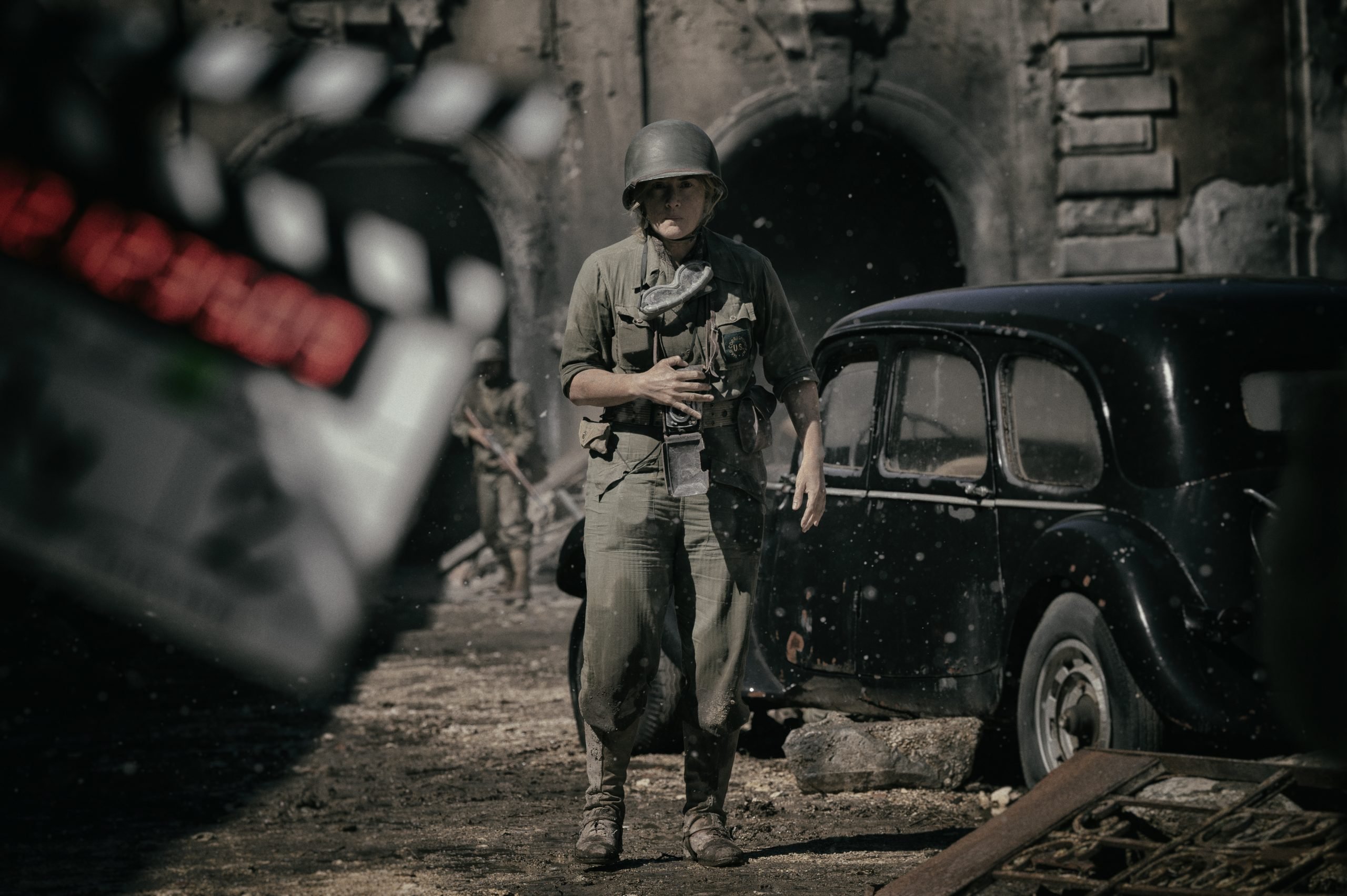
In September, the 2023 Toronto International Film Festival will host the world premiere of Lee, a biographical drama centered on photographer, Surrealist muse, and war correspondent Lee Miller.
Directed by Ellen Kuras, the release stars Kate Winslet in the lead role, alongside a cast including Alexander Skarsgård, Josh O’Connor, Andrea Riseborough, and Marion Cotillard. The film was written and produced with the full support of the Lee Miller Archives, and is based on The Lives of Lee Miller, the 1985 biography penned by Antony Penrose, Miller’s son.
Miller indeed amassed lives’ worth of experiences that no two-hour film can even begin to encompass. Nonetheless, Lee will be worth watching for the first cinematic stab at depicting a restless and fearless artist. Here’s what to know about the film.
But wait, who was Lee Miller?
Man Ray, Solarized Portrait of Lee Miller (1930). Photo: © Man Ray Trust/Artists Rights Society (ARS), NY/ADAGP, Paris/Telimage.
Miller was born in Poughkeepsie, New York, in 1907 and grew up modeling (sometimes, controversially, in the nude) for her father, an amateur photographer. She was discovered at age 19 by Condé Nast himself, at a chance meeting on the street. It launched her modeling career at Vogue, where she worked with photographers including Arnold Genthe and Edward Steichen.
In 1929, she moved to Paris, hoping to study with Man Ray. She ended up becoming his muse and closest collaborator—they jointly invented the technique of “solarization,” for one—as the pair embarked on a love affair for the ages. While in Paris, Miller also befriended the likes of Picasso, Paul Éluard, and Jean Cocteau, who immortalized her in a statue.
Upon her return to New York in the 1930s, Miller established her own studio and a practice that saw her exhibited at the Julien Levy Gallery and Brooklyn Museum. She also married an Egyptian businessman, living for a spell in Cairo where she snapped the haunting Portrait of Space (1937)—a work that inspired Rene Margritte’s Le Baiser (1938).
That’s a lot to put in a film.
Lee is not billed as a biopic and won’t attempt to bottle Miller’s expansive existence. Instead, it focuses on what its logline described as “the most significant decade of Lee Miller’s life,” namely the years between 1938 and 1948 when she served as an official correspondent for Vogue during World War II.
Armed with her trusty Rolleiflex, Miller was dispatched in 1942 to the European frontlines, where she was joined by photojournalist David E. Scherman. Together, the pair witnessed the siege of St. Malo, the execution Prime Minister László Bárdossy in Hungary, the Battle of Alsace, and the liberation of Dachau and Buchenwald, among many other atrocities.
“I’m busy making documents,” she wrote of her photojournalism, “not art.”
Lee Miller, After the battle of Paris, Paris, France (1944). Photo: © Lee Miller Archives, England 2023. All rights reserved. leemiller.co.uk
Most famously, in 1945, Scherman snapped a photograph of Miller soaking in Hitler’s bathtub, having wiped her boots, muddied from her visit to the liberated concentration camps, on the dictator’s fluffy white bathmat. The day the image was made, April 30, also happened to be Hitler’s last day alive.
Miller’s wartime photographs would rank as some of the grisliest images Vogue ever ran, but their publication, to the photographer, was plainly urgent. “I don’t usually take pictures of horrors,” Miller wrote to Audrey Withers, the then-editor of Vogue. “But don’t think that every town and every area isn’t rich with them.”
The film’s producers note: “What Lee captured on film in Dachau and throughout Europe was shocking. Her photographs of the war, its victims, and its consequences remain among the most historically important.”
What else is in Lee?
The movie also promises to explore how the horrors of war took an “enormous personal” toll on the photographer upon her return to civilian life. Her PTSD was compounded by an earlier trauma from a brutal sexual assault she survived at age seven, as well as her second husband Roland Penrose’s long-running affair with a trapeze artist.
As her son recounted in his book, Miller’s later years, which the family spent in the English countryside, were steeped in deep depression and an addiction to alcohol. Her greatest source of pleasure, it seemed, lay in the Surrealist dinner parties she threw, attended by the guests including Leonora Carrington, Max Ernst, and Joan Miró.
So who’s playing which artist in the film?
Lee Miller, Roland Penrose, Lambe Creek, Cornwall England (1937) by Lee Miller. Photo: © Lee Miller Archives, England 2023. All rights reserved. leemiller.co.uk
Despite its emphasis on her war years (and early images of Winslet decked out in military gear on set in Croatia), Lee very much has Miller’s Surrealist circle in focus, having gathered a cast to portray her many artist friends, some of whom she cherished for decades.
Sean Duggan will show up as Man Ray, Vincent Colombe as Éluard, Noémie Merlant as Nusch Éluard, and Enrique Arce as Picasso—who, upon meeting Miller after the liberation of Paris, declared, “this is the first Allied soldier I have seen, and it’s you!”
Winslet is also matched onscreen by Skarsgård, in the role of Roland Penrose, the Surrealist painter and Miller’s second husband.
The onscreen Vogue staff is made up of Riseborough as Withers, and Cotillard as Solange D’Ayen, the fashion director of French Vogue. Samuel Barnett plays photographer and Vogue regular Cecil Beaton, and Andy Samberg the photojournalist Scherman.
More Trending Stories:
The Company Behind the Wildly Popular ‘Immersive Van Gogh’ Experience Has Filed for Bankruptcy
Drake Outs Himself as Buyer of Tupac Shakur’s Iconic Crown Ring, Sold for $1 Million at Sotheby’s
Fast-Rising Artist Jeanine Brito’s Visceral Paintings Put a ‘Dark and Grotesque’ Spin on Fairy Tales